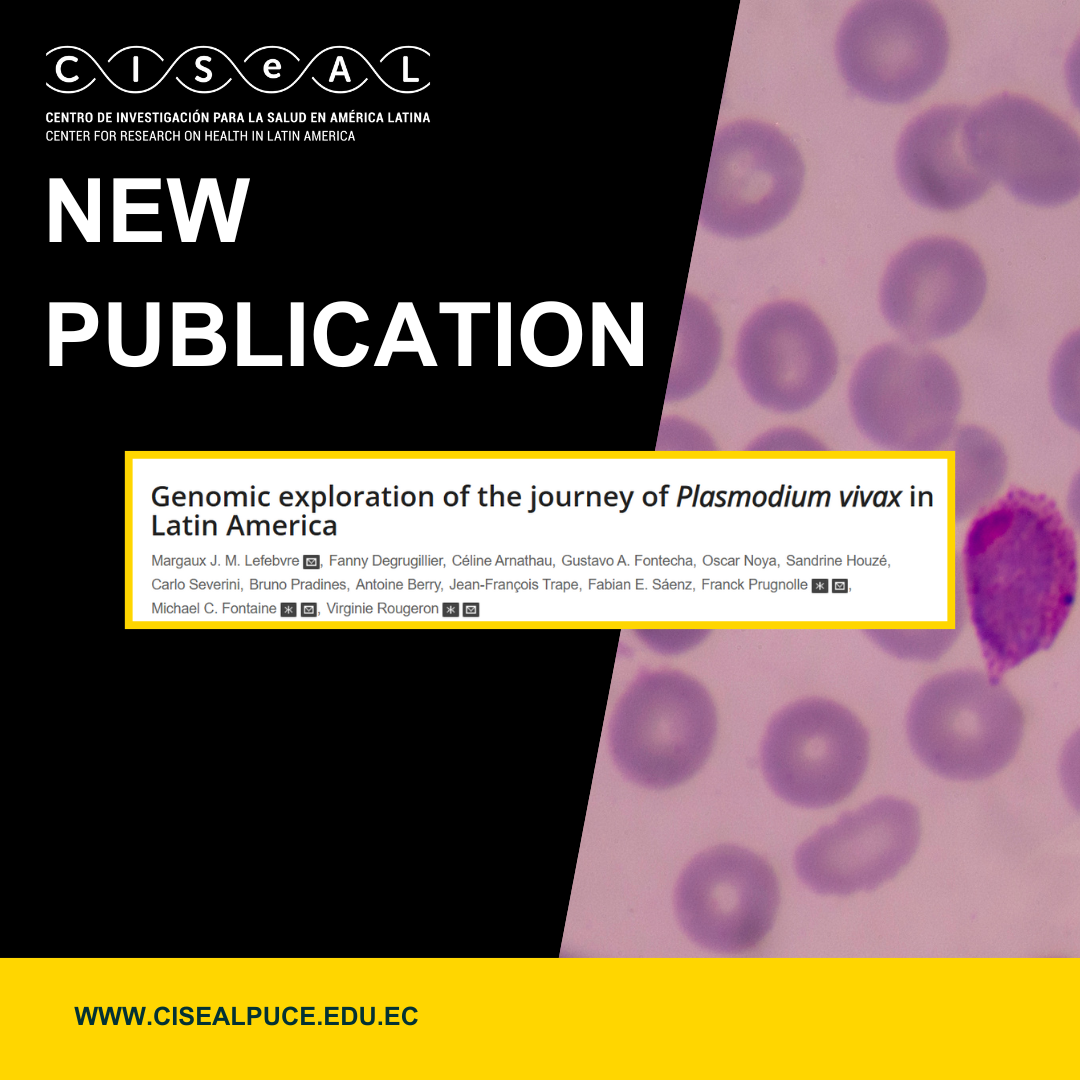
A new international study has successfully reconstructed the evolutionary history of Plasmodium vivax—the parasite responsible for the majority of malaria cases in Latin America—with high precision. Using state-of-the-art population genomics techniques, researchers analyzed 620 P. vivax genomes, including 107 new samples from West Africa, the Middle East, and Latin America. The research was coordinated by the French National Research Institute for Sustainable Development (IRD) and brought together institutions from Europe, Latin America, and Africa. CISeAL actively contributed to the study, with our principal investigator, Dr. Fabián Sáenz, participating as part of the scientific team.
The results reveal a much more complex evolutionary history than previously believed. The study found that most current P. vivax populations in Latin America derive from a now-extinct European lineage, with possible additional contributions from yet-unsampled populations, likely originating in West Africa. Furthermore, multiple waves of parasite introduction to the continent were identified: an initial one during early European contact, followed by more recent waves linked to 19th-century human migrations.
These findings offer a new perspective on how historical migrations have shaped the parasite’s genetic diversity and open new avenues for understanding its behavior, evolution, and spread—key elements in designing effective malaria control and elimination strategies.
🧬 If you're curious about how this global study reshapes our understanding of the origin and spread of Plasmodium vivax, we invite you to explore the full article in PLOS Pathogens: https://journals.plos.org/plospathogens/article?id=10.1371/journal.ppat.1012811



